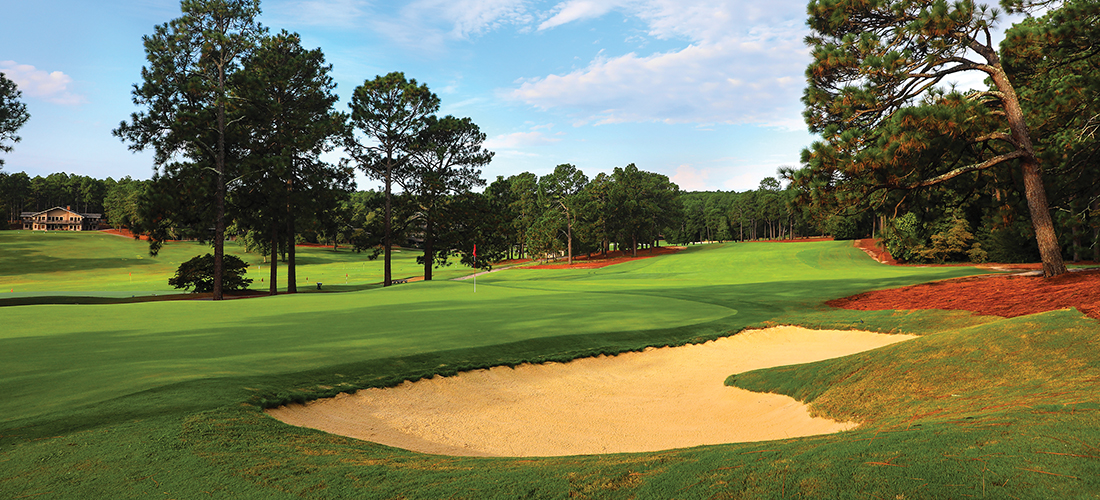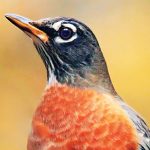
Four on the Floor
Major championships at home in the Carolinas
By Lee Pace
The coming year is a big one in the Carolinas for national golf competitions as four USGA national championships will be scattered across the region — two in the Sandhills, one along the coast, and one smack in the middle of an urban market measuring more than two million residents. There is no grand design for this concentration of “majors” along our pristine nook of the Atlantic Seaboard, just a random confluence of events that have landed the limelight on Pinehurst No. 2, Pine Needles, the Country Club of Charleston and Old Chatham in one calendar year.
“The schedule obviously highlights the fact we think we have a lot of great championship venues in the Carolinas,” says Reg Jones, the USGA’s senior director of U.S. Open Championships. “There’s a lot of great golf here, and the coming year will be a showcase for the Carolinas.”
The festivities begin May 16-19 with the U.S. Women’s Senior Open coming to Pine Needles and being played for just the second time after launching in 2018 at Chicago Golf Club. The club has a rich history in the women’s game via its ownership since the 1950s of the family of the late Peggy Kirk Bell; it has hosted three U.S. Women’s Opens and is set as the venue for a fourth in 2022.
Two weeks later, the spotlight moves to Charleston for the 74th U.S. Women’s Open. The club is one of the oldest in the Carolinas, founded in 1900 on a site north of the city and moving in 1925 to its present location on John’s Island, just across the Ashley River southwest of downtown. The club and the USGA both enjoyed the 2013 Women’s Amateur won by Emma Talley and thought it worthy of a second take on a bigger stage.
The 119th U.S. Amateur continues the vaunted heritage of Pinehurst No. 2 as a major championship setting and will be held Aug. 12-18, with the two qualifying rounds shared on the No. 4 course recently redesigned by Gil Hanse. This will be the third U.S. Amateur on the Donald Ross-designed course, following Labron Harris Jr.’s win in 1962 and Danny Lee’s triumph in 2008; it falls dead in between the course’s last U.S. Open in 2014 and the next one set for ’24.
And then in the last week of August (24-29), the 65th U.S. Senior Amateur comes to Durham and Old Chatham Golf Club, a course designed by Rees Jones that opened in 2001 to serve the fast-growing market of Raleigh, Durham and Chapel Hill. Old Chatham hasn’t the historical pedigree of the others, but it was conceived during the heady days of the late 1990s golf boom as a throwback — golf only, no residential component, and tasteful but modest infrastructure.
“Our concept was to create a golf club for the purist,” says Rex Teaney, one of Old Chatham’s founders. “We knew this would be the second or third club for most of our members, so we didn’t need a pool and tennis and fine dining. We studied the old-line clubs and tried to implement their structure. We’re all about golf, the amateur game, and trying where we can to give back to the game. That was the appeal of having a Senior Amateur and, I think, why the USGA was attracted to coming here.”
The Carolinas’ roots with the USGA have run deep for more than half a century as two luminaries in USGA administrative annals, Richard Tufts and P.J. Boatwright, have deep ties to the Sandhills of North Carolina and the upstate of South Carolina.
Tufts was the grandson of Pinehurst founder James W. Tufts and was born in 1896, one year after James Tufts built the Holly Inn, two years before the first nine-hole golf course was cobbled from the barren, sandy soil, and five years before the Carolina Hotel opened. After graduating from Harvard in 1918, Richard returned to Pinehurst to join the family business and eventually run the resort and club.
Tufts became a prime mover and shaker in international golf administrative circles, particularly in the 1950s with his ascension to the presidency of the USGA (1956-58). There were few parts of the game that his expertise and good sense did not touch — from rules to agronomy to course setup to tournament administration. Tufts also ran the Carolinas Golf Association from Pinehurst from 1934-65 as its secretary-treasurer.
“How he found time for the CGA and the USGA while still running Pinehurst always amazed me,” son Peter Tufts said. “Dad and Donald Ross both had the ability to juggle what seemed like a hundred balls at the same time. But they got things done and did them well.”
In 1955, Tufts hired a crack young amateur golfer from Aiken, South Carolina, to move to Pinehurst and run the day-to-day operations of the CGA. P.J. Boatwright thrived at the job for four years and then Tufts told USGA Executive Director Joe Dey in 1959 that Boatwright was ready to move to the national stage. Boatwright moved to USGA headquarters in New York City (prior to the association’s 1972 move to New Jersey) to become assistant executive director with the USGA and a decade later succeeded Dey. He spent 31 years with the USGA, taking the title of executive director of rules and competitions in 1980 to reflect his specialization in the elements he enjoyed most.
The affection and respect the world of golf had for Richard Tufts was one reason competitors like Billy Joe Patton organized and presented a petition to the USGA in 1960 that the U.S. Amateur should be held on No. 2, which it was two years later. And it was Boatwright’s fondness for No. 2 that kept the idea of No. 2 hosting a U.S. Open in the incubator of potential sites for several decades — provided the club could eventually solve the issue of having firm and fast putting surfaces in mid-June, which it did in the 1990s with the advent of Penn G-2 bent grass.
“There is a strong Pinehurst influence that goes through our organization,” says Reg Jones. “And there is a lot of Pinehurst influence in the game of golf. It’s a very special place.”
Tufts died in 1980 and Boatwright in 1991, but the synergy between the USGA and Pinehurst remained, and it escalated five years into the new century when the USGA, in effect, swallowed the operation that had been known as Pinehurst Championship Management and had run the 1999 and 2005 Opens at Pinehurst, the 1994 U.S. Senior Open on No. 2, and the 1996 and 2001 Women’s Opens at Pine Needles. Jones and his colleagues joined the USGA staff, and all U.S. Opens are now run out of a satellite office the USGA has in Pinehurst. Offices are on the second floor of the Pinehurst Department Store Building in the heart of the village, just above the Villager Deli and Gentlemen’s Corner, with 11 full-time employees at the moment and likely more to come as the 2022 Women’s Open at Pine Needles and 2024 Open on No. 2 approach.
“It’s surprising how many people don’t know they are here,” says Marty McKenzie, the building’s owner and the USGA’s landlord. “The USGA could locate anywhere in the United States, but they have chosen to be in Pinehurst. What an honor.”
And how convenient in 2019 with so much activity within a driver and 3-wood of Pinehurst.
Elite golfers of both sexes and all ages will wage their sticks and wits against Ross at Pine Needles and No. 2, Hanse on No. 4, Seth Raynor at Charleston and Rees Jones at Old Chatham.
They’ll negotiate Ross’ crowned greens on No. 2 and Raynor’s right-angle corners and his infamous “reverse redan” par-3 11th at Charleston. They’ll tread the rugged topography of Old Chatham and aim away from some of the recently reconfigured bunkers at Pine Needles.
And there will be some ladies teeing it up at Pine Needles for the Senior Women’s Open who know that course from the 1996 and 2001 Women’s Opens. When the senior event commences, it will have been a dozen years since the last major event at Pine Needles, the 2007 Women’s Open.
“The Women’s Opens at Pine Needles were phenomenal,” Jones says. “The club and community certainly support the women’s game, so this is another step in that tradition.”
That applies to four clubs across the Carolinas as well in 2019. PS
Chapel Hill writer Lee Pace has chronicled many winters, worth of Pinehurst golf lore in three of his books — Pinehurst Stories (1991), The Spirit of Pinehurst (2004) and The Golden Age of Pinehurst (2012).





